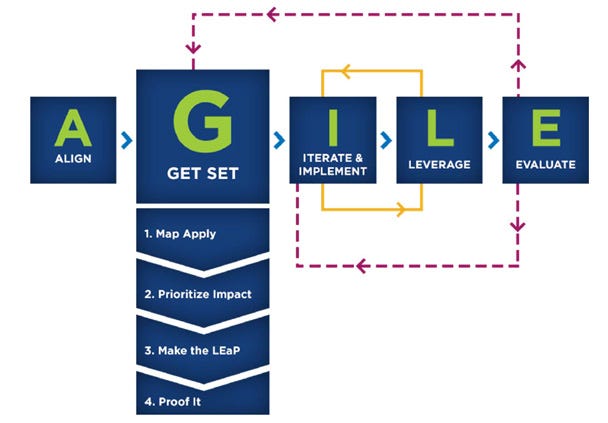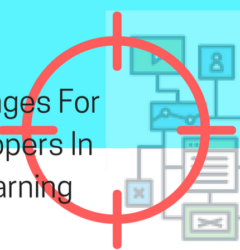E-Learning Experts On Instructional Design
11 Apr

Table of Contents
ToggleIn the past few weeks, zipBoard’s blog has explored various aspects of instructional design. Right from understanding what is instructional design, its underlying theories, the various instructional design models and processes, to the key aspects to remember during the instructional design process.
To round up our series on Instructional Design, we spoke to experts from the industry and e-Learning professionals who have adapted and applied this theoretical knowledge to practical use. They shared with us their take on instructional design, what ID processes they use, what challenges they face etc.
Alexander Salas | Instructional System Designer, CPLP
Alexander Salas is an award-winning Certified Professional in Learning and Performance and instructional designer specializing in e-Learning and augmented reality for workplace learning.

“As we know for the last 60 years, Instructional Systems Design (ISD) brought a systematic approach to the development of training programs. The emphasis is on “systematic” because that’s what ADDIE guides us to do in every training intervention. The Analysis and Design phases are the most critical in my opinion as they can make or break the rest of the stages.
One key thing to consider though is that ISD was not created for every purpose of every organization. ISD has academic and military roots, it was not meant for workplace learning (except in a huge organized entity with a fat budget like the US military).
For example; it’s unrealistic to think that a small company with two instructional designers would be applying the full spectrum of ADDIE. It would take a very long time. This is why we can see many IDs in our industry that are truly just content developers without a systemic approach.

Finally, I would say that if you lead an organization that truly wants to gauge the impact of its training initiatives, any approach you take should involve the five stages of ADDIE.”
Guy Wallace | Performance Analyst & Instructional Architect
Guy Wallace is a Performance Analyst and Instructional Architect. He has been designing and developing Learning and Performance Support content for Enterprise Learning and business-critical target audiences since 1979. He has also developed his own process of implementing training and development called Performance-based Accelerated Customer/Stakeholder-driven Training & Development (PACT).

“I use my own methodology which was developed in the early 1980s. It enables both staff and subcontractors at our consulting firm to conduct planning, analysis, design, development, pilot testing, and revision & release — the 6 Phases of my ADDIE-like framework — with more consistency and predictability in time burden, cycle times, and costs.
We use standard templates for data capture and reporting, but these are adapted if needed. We use teams in a system called Facilitated Group Process of Master Performers. Master Performers include subject matter experts, managers/supervisors and other novice performers.
This team of Master Performers is built at the Analysis stage and the Design team is a subset of the members of this team. It helps speed up the process and ensure quality and authenticity from the get-go.
Facilitating a team of Master Performers can be a tough duty but it is worth the investment. It leads to better accuracy, completeness, and appropriate data.”
Erich Renken | Sr. E-Learning Instructional Designer, United Educators
Erich Renken is a senior e-learning instructional designer at United Educators and has been developing and managing the development of digital learning for more than twenty years.

“I understand why a waterfall process is attractive to an organization. With waterfall, you can easily create high-level milestones (“analysis done by this date, storyboard done by this date, development done by this date, etc.”). It can make project management easier. There’s an implicit risk built into that mindset, though, and that’s the idea that the deliverable will be ready to move into the next phase. I know from experience it doesn’t often happen that way. There are usually several items that require significant rework.
Agile addresses this issue by using more frequent deliverables. When I’m producing a course, I commit to weekly builds that I post on zipBoard for review. This helps me address issues earlier in the process when they’re “cheaper” (in terms of both time and money) to fix. Sounds great, right? By the time you’re done with your iterative approach, everything’s perfect. Well, no. Here are some of the struggles with an agile approach that must be overcome.
SMEs will comment on items that you don’t want to hear about. By the very nature of an iterative approach, your deliverables will be incomplete. Getting the SMEs to focus on their areas of expertise without commenting on the incomplete items can be challenging. When I’m prototyping courses, I’ll often use scratch audio or images pulled from a Google search to populate my content. These are quick placeholders until I can produce them later. Invariably, though, I’ll get more comments about the placeholders than I get about the content.
A lot of times SMEs are used to a waterfall mindset where they’re the last line of defense between a course developer and putting the course into the LMS. As such, they feel compelled to comment on every aspect of a prototype that’s unfinished. It’s your job to make it infinitely clear what their role is.
SMEs will get content fatigue. Asking SMEs to review weekly builds is asking a lot. Most SMEs aren’t solely focused on your project. Their time is limited. Because of this, many of them will stop reviewing the builds. To combat this, I try to be very explicit about what’s changed between the builds. If an SME reads my summation of the delta and it doesn’t apply to them, I’m fine with them not looking at that week’s build.
It’s a little like “The Boy Who Cried, Wolf.” If you cry “Wolf!” every week and you don’t need them, eventually, the SMEs are going to stop coming. Maybe some SMEs don’t need to be involved in reviews every week. Maybe some SMEs don’t need to be involved until later in the process. Appreciate the time they’re spending and make it clear when you really need them.”
Check out Erich’s complete interview with zipBoard where he goes deeper into how his instructional design team at United Educators works:
Into the e-Learning world with Erich Renken
Jan Thorien | Sr. Manager of Training-Content Development, Wayfair
Jan Thorien previously worked at SVP of e-Learning and Media Production at Citi, where she established the first e-Learning / multi-media team and training department for consumer learning, supporting global training initiatives for Citigroup Global Consumer Banking operations, with 57 centers in 25 countries. She will be working with Wayfair as Senior Manager of Training-Content Development.

“A one size fits all approach is rare these days. We probably find ourselves as Instructional Design and Development professionals familiar with various ID models, adapting our design and development models intuitively based on the training need, the time frame, and the organization’s environment.
For example, developing training modules for software application work-flows being developed by scrum teams, requires leveraging an iterative, incremental time-bound approach. Developing training for more static content e.g. compliance training or leadership training, could leverage a more waterfall type approach. Both however, are influenced by the organization’s environment and needs at the time.
Financial technology (a.k.a. Fin-Tech), greatly influenced the design and development approaches my Learning Organization and Development team leveraged for our projects. We found ourselves in “new territory” innovating, experimenting, failing, failing fast, and learning the best way to quickly design, develop and implement training on our ever-evolving banking mobile apps. This training must be rolled out to our customer contact agents before the applications are made available to our customers. This meant we were developing training at the same time the applications themselves were being developed.
If all the parties involved in producing each short, online training module (business stakeholders, application developers, designers, and legal/compliance approvers) could be a dedicated, self-governing, cross-functional scrum team like the application developers, we could leverage all of the efficiencies this brings to creating these training modules. Since this is not the reality, we eventually developed a hybrid approach, leveraging analysis from ADDIE, and iteration and prototyping from Agile and SAM.

Initially, our design and development ratios increased as we tried to accommodate the changing software requirements during this phase. We realized that we needed to leverage another aspect of the Agile model; Minimal Viable Products (MVPs). We created our online micro-learning simulations of the application flows as low-interactivity (Level 1) rather than a more complex Level 2 or 3. We embedded them into the training module that provides the context. We could make the changes more quickly (be more agile), reducing development time, yet keep the iterative approach aligned with the pace and changes of the three-week scrum sprints. We are watching closely to ensure that although our simulations were less robust, they will still be effective.
This is an example of why I enjoy and am passionate about the instructional design, L&D profession. It is never static, demands ingenuity, creativity, and problem-solving. We must flex to the ever-evolving needs of the organizations we support. Today, designing for modern learning provides this opportunity.”
Richard Sites | Chief Learning Officer, American Association for Physician Leadership
Richard Sites has over 25 years of experience designing and implementing web-based training, and the processes which support its design and tools to support improved workplace performance. He is also the co-author of the book — Leaving ADDIE for SAM — with Dr. Michael Allen that highlights the Successive Approximation Model (SAM) and the Savvy Start.

“I often get asked — and for good reason — which ID model I use. Having co-authored two books on SAM, the answer might seem obvious. But there’s a little more to it than that.
I am a strong believer in an AGILE approach to instructional design — so much so that I can barely understand the reasoning behind other, more linear approaches.
Now, I get it. A linear approach to design is clean, clear, and easily understood by all involved. The steps/stages are obvious and purposeful. There are recognizable moments for approval and review. But that’s where the benefits of a linear approach end — for me at least.
Instructional design processes should be focused on effectively creating effective instruction. Most of the time, I see people focused solely on the process itself, with little to no concern for what is being built.
“But if I can create an efficient process, the product will be good!”
This is the mantra of so many people in our field. They have this belief because they have been measured and judged by their organizations on the efficiency of their process. Rarely, however, does anyone in their organizations wonder about the measurement of “a good instructional product.” Efficiency matters — and it rightfully should.
But an efficient process should not outweigh a quality product. At the end of the day, the instructional event should produce some change in the people consuming the product. We need to have a clear set of principles for the form, function, and intent of the instructional product before we start the process of designing and developing it.
So, when you ask me what ID model I use, I am likely to answer SAM, because it is built upon (and seeks to fully employ) the instructional principles which I feel produce the most effective product. Without the ability to iterate a design and challenge its usefulness (which SAM excels at), the execution of a good design is so difficult.

Also, SAM seeks to provide numerous opportunities for collaboration. Too many instructional products are built by one- or two-person teams. Good instructional products require input from many perspectives during the design and development process. SAM offers the best chance to turn those perspectives into the inspiration which drives future iterations.
Finally, SAM provides a clear explanation for the purpose and use of iterations. Many contemporary models (like the ones included in this blog post) like to show curved arrows pointing back to a previous step or two. This is the classic ADDIE adaptation. But just because you CAN loopback doesn’t mean you SHOULD, and do you even know WHY you would? These are not questions answered by these curved arrow-filled pseudo-models. It is critical that you — and everyone in the project — understand why an iteration will occur, what is going to happen when it does, and the purpose of each iteration throughout the project.
So, that’s why (at least briefly) I choose SAM for the design and development of engaging, performance changing instructional products.”
Shannon Tipton | Chief Learning Officer, Learning Rebels
Shannon Tipton has worked with organizations to modernize onboarding programs, leadership curricula and enhance sales training programs through the use of blended and microlearning techniques. She has spent over 20 years developing successful learning strategies and infrastructures and has worked with teams to help businesses realize their full potential.

“There have been some articles and blog posts doubting the relevance of instructional design and of the role of an instructional designer. I even saw this tweet the other day (in part):
”When will instructional designers get their heads out of their “you know what” and understand their roles are dying out.”
First — rude.
Second — wrong.
The role of the instructional designer has never been more alive and exciting. As with any role in an organization, from CEO to Marketing to HR, job roles are evolving.
The range for an instructional designer has opened. A progressive instructional designer is one who is looking at blended approaches and how they can be incorporated to enhance traditional models. They are looking at microlearning, augmented reality, and video creation as means of learning retention and spaced practice. Even when creating training for classrooms — there is a variety of ways to blend or flip a classroom to make them more effective, engaging, and further embed learning. Evolving.
When an e-Commerce client asked me for additional learning support to upskill their staff of instructional designers, another class was not the answer. Using the tool UMU.com and Slack, and following the foundations of the ADDIE model, we provided 4 weeks of carefully crafted microlearning elements to drip feed to the team. The feed was delivered once a week culminating in a design project. Spaced learning and practice retrieval accomplished in an infinitely more interesting and time friendly manner. Evolving.
Dynamic instructional designers are learning how to take data and create powerful infographics. They are taking subject matter experts (SME), recording them, and creating organizational podcasts or “radio stations”. They are gathering informed end-users and helping them create user-generated content that can then be curated, reviewed, organized, and made accessible to the masses. Evolving.
The life of the instructional designer is not in its declining years — it’s vibrant, it’s challenging, and it’s fun! Just like any other piece of art, we create pieces for people — not for us. People write because they have a story that needs to get out, they paint because a scene moves them. We create because we want to help people do their jobs and to be the best versions of themselves. It’s just that your art form isn’t done with paintbrushes or modeling clay, your main tools are your mind and your imagination.
So, instructional design is at a critical and exciting point. It is far from dead; it’s an art form evolving and coming to life.”
This article is part of a series on instructional design. You can see the first article here and the second one here.
[Guide]
How to Set Up an Effective Learning Design Feedback and QA Process
Learn how to streamline your design feedback and QA process for all your learning design projects by reading the guide here. No sign-up required.
Click to ReadRelated Post
Recent Posts
- Tagging & Filtering: 2 Sure Ways to Enhance Construction Document Control (Quick Guide for Architects) April 12, 2024
- Introducing the All-New Video Recording Tool in zipBoard April 12, 2024
- Project Management in Architecture: A Complete Guide with Expert Insights April 8, 2024
- Construction Document Management: A Quick Guide for Architects & Firms March 26, 2024
- Streamline AEC Document Management and Collaboration with zipBoard March 17, 2024
©️ Copyright 2023 zipBoard Tech. All rights reserved.


